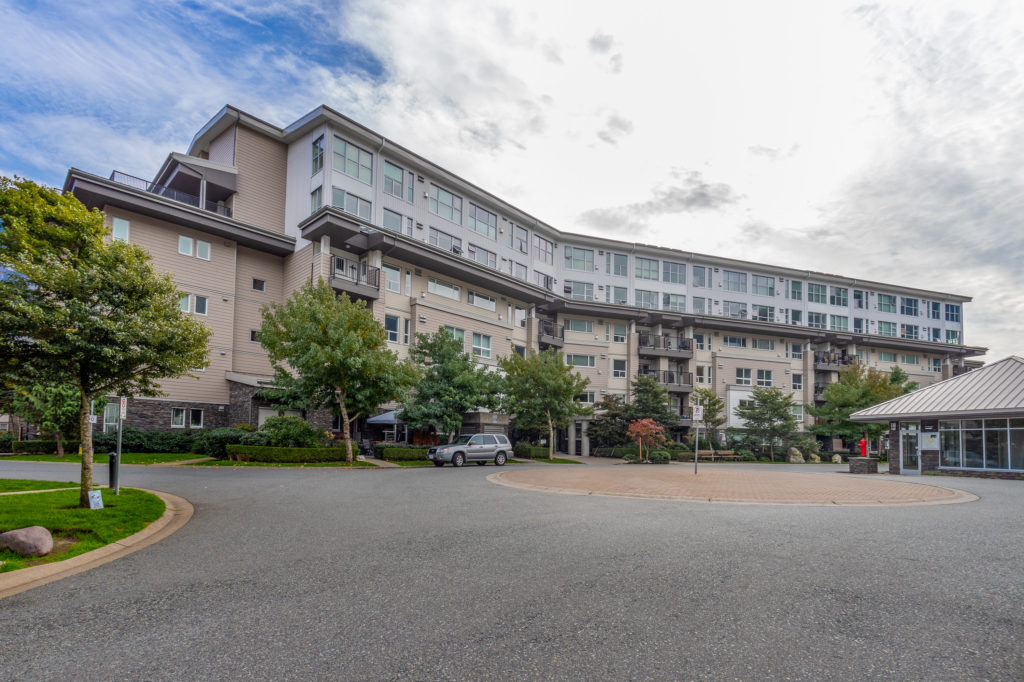Opinion:
Last month, over 1700 people expressed their displeasure with the city council choosing to borrow $16Million to build a new public works yard administration building. Within weeks of that defeat, Council has decided to reintroduce the borrowing bylaw and add on another few million due to the length of time the project takes.
The decision to build stand-alone public facilities
This Council has determined that there is only one way to pay for, build and operate public facilities. Almost all progressive municipalities have accepted that constructing single-use public buildings is an archaic, expensive, and wasteful use of taxpayer dollars.
I strongly support a new public works building. I suspect that the majority of people who signed the petition would also. I’m afraid I, though, have to disagree with the Councilor who said people signed the petition because they were provided with misinformation by some secret organization, when by their admission, Council did a poor job of:
- Explaining the rationale for the public works administration building,
- Explaining the impact borrowing for public works will have on other facilities,
- Making public the studies undertaken to determine the most cost-efficient method to construct the facility,
- Providing full costing of the project.
The District has argued that the renovations to Brennan Park and the borrowing for the public works yard/administration building are not linked. Yet, in a recent public meeting, the Mayor asked a Finance department staff member,
“I know one thing people are looking forward to seeing; next in line is Brennan Park, which we can do through grants & other external funding. Is our staff confident that our debt servicing will allow for that?”
The staff answer was: “At this point, as the projects start to escalate, we will have to go back, frankly, to the table in terms of re-looking at all of the ten years…confidently? Really, for Brennan Park, it depends on the external funding as well. That is what we have in the plan is to have part of that funded by external as well. That is the dependency on that going forward.”
That certainly appears to link the two. If the Borrowing bylaw is approved, how can it not delay the ability of the District to borrow additional funds for Brennan Park?
So if the Borrowing bylaw is approved, how can it not inhibit the ability of the District to borrow additional funds for Brennan Park, given that the Public Works Yard eats into a lot of the District’s borrowing capacity?
In the last go-around, people were legitimately questioning if the $22Million (+/) spent on this building is the proper priority when there is a clear need for significant additions to our recreation facilities or a safe exit point from a densely crowded downtown. (Think Lytton and how quickly that devastating fire grew).
If taxpayers are not being given all the information to make an informed decision, then it is legitimate for a person to ask probing questions. I would go even further and argue that the taxpayer has the right and perhaps the obligation to ask questions, expecting honest, respectful and timely answers – without the threat of reprisals or intimidation.
Alternative Approval Process – Is the second go-around legal?
As of this month and by Council’s admission, the building has yet to be designed entirely, yet Council went to the public to borrow $16M! When the public said “no,” Council responded by saying: “Well, you (the public) have just been misinformed and misled by some unknown entity, and we are going to go again, but we now need a few more million dollars.
Whether Council really ought to be moving forward with a second Alternative Approval Process is questionable. The Ministry of Municipal Affairs’ guidelines and their staff has stated Council cannot
Elector Approval Not Obtained (10% or More).
“Local governments do not have the immediate authority to adopt the bylaw or proceed with the matter (e.g. borrowing for water system upgrades) when 10% or more of the eligible electors in an AAP signed and submitted an elector response form before the established deadline. When 10% or more electors have signed and submitted an elector response form, and the local government has decided to proceed with the matter, they must hold assent voting. Moving to assent vote must occur no later than 80 days after the deadline for submitting elector response forms during the AAP. [LGA, section 174].”
Does this mean that a second AAP cannot be held and that the Council must go forward with the Assent vote? After a failed AAP, a local government can proceed directly to an assent vote on the same bylaw, or abandon the bylaw and either not move forward with the project, or alter the proposal and adopt a new one. If a local government proceeds with a new bylaw and wants to go to AAP again, Ministry staff would be looking to see what community outreach has been done and if the proposal is different than the original bylaw.
It is interesting to read between the lines that the Ministry does not state whether or not Squamish Council has or has not followed the letter of the law, but rather a senior Ministry representative has stated:
“If you believe the District has in some manner failed to comply with provincial legislation or has otherwise acted outside of its authority in holding the proposed AAP, you may wish to seek legal counsel to determine any potential remedies available through the courts.
Suppose there are concerns that District Council has not complied with the legislative framework about securing elector approval in this particular circumstance. In that case, you and other like-minded citizens can apply to the courts for a judicial review of Council’s decision or actions in this matter. The courts have the expertise to adjudicate questions of law and fact regarding due process, administrative fairness and jurisdiction of local governments.”
More than one way to skin the cat:
In 2018, the District created the Real Estate and Facilities Master Plan, which identified facilities needing replacement or repair. In 2019, the cost was well over $150Million.
The crux of the problem is that this Council has had four years to plan to replace the public works building. If the District is as poor as we are led to believe, then why has Council only chosen to look at building a stand-alone public works building?
There is a saying: “In the absence of information, there is speculation.”
So, how transparent is Council being? Recently, I was told that Council has signed a design and build contract. If this is true, no wonder Council is anxious to get the actual legal authority to honour that contract. One can only wonder if the signing of such a contract is legal? Was it publicly tendered? If an agreement has been signed without public knowledge, should one speculate that Council has already signed a 40-year lease for their new city hall offices?
Regardless of whether Council is following the letter of the law or not, the significant issue is not whether there is a need for a new building, but rather the planning and decision-making processes.
Partnerships:
The Council has had four years to plan this facility, yet there are still so many unanswered questions.
As stated, most municipalities no longer build stand-alone public buildings. The school district is in as much need of safe and modern public works building as the municipality; yet not once in the past four years has this Council met with the Board of School Trustees to talk about shared services.
I agree there needs to be a new administration facility, but we also need a new transit hub. But the school district also needs a safe public works facility, a transit facility for their buses, and a new administration building – just like Council wants a new city hall, public works building and transit hub.
The shocking truth is that the District of Squamish has not met with the school board to discuss collaboration, despite receiving two letters from the school district indicating their strong interest in doing so.
In this day and age, collaboration can only make compelling sense from multiple points of view, including financial, urban planning and the environment.
Councillor French has stated that “…all avenues have been explored.” It is difficult to accept that assertion when the two letters from the school district (sent in November and December of 2021) have not been answered, nor has there been any collaborative planning for joint facilities.
In a recent article, Councillor Stoner is quoted as saying: “…I do believe that we need to be building for the future and not look into the past” Of course, she was referring to radically reducing the parking requirements for the Diamond Head development. Still, I wonder why she has chosen to lecture that neighbourhood when she chooses to ignore the cost to the taxpayer of constructing stand-alone public buildings?
I have been told the chosen site for the public works building is not large enough to accommodate any other shared space. But during a general discussion of the 5-year financial plan last December, staff said that the proposed building is already over-height. If this is true, the building will require a height variance- and who approves height variances? Yep, it’s the District. This implies that they could add space to share with other agencies if they chose to do so.
The Mayor has said publicly that Council can meet anywhere. One of the shining accomplishments of the District occurred during the pandemic when city hall was closed, and everything that was needed was available online. So, is there a strong argument to build a separate city hall and a separate public works administration building when Squamish is reportedly so broke?
On the topic of a new city hall, who typically goes to city hall? Developers, builders and people who want to pick up transit passes. I undoubtedly don’t recall my friends taking their kids to city hall for a Saturday afternoon picnic. Why must everyone go to city hall to get their transit passes? Brennan Park and the library should even now be issuing such passes.
Where would builders get their building permits – in the densely developed downtown or an area with ample parking? The fundamental question is, why build two separate buildings that are only open to the public between 7:30 am and 4:30 pm five days a week? But I digress.
But therein lies the Gordian Knot.
Other possible partners provide economies of scale, reduce capital and operating costs, reduce the impact on our environment, and improve customer service.
This project is needed, but the public works administration building in its current form should never have gotten to this point.
This Council has angered over 1700 people.
The second AAP may or may not be legal.
Council needs to accept that they have taken a myopic and old-fashioned approach by planning the construction of single-use, single-user facilities.
Council needs to take a step back and reimagine how to fund and operate the many needed capital projects.
Questions:
There are many questions about the public works building that Council needs to answer; here are only a few:
- Has the District signed a contract to design and or build the public works yard building??
- Why has the District not held significant discussions with school district 48 regarding the possibility of creating shared facilities?
- What alternative studies did the District undertake before moving forward with the current public works building?
- By their admission, why did Council choose to go to the taxpayer to borrow millions of dollars on a facility that has yet to be fully designed?
- Why was the current location for the building chosen when another site could have been selected, enabling partnerships with municipal departments or perhaps with other agencies?
- Are two empty office floors being built when Council says there is no room to move city hall offices to this site?
- If the (yet-to-be-fully-designed) building cannot be moved, why can’t the building be designed to be higher, including city hall or at least a few departments, thus reducing the need to locate the required square footage in a downtown leased commercial building?
- Have all internal cost staff costs been included in the total estimate of this facility?
- What is the total cost of the public works building?
- Has any funding been contributed from the Water and Sewer Utility funds?
- What impact is there on borrowing funds to pay for the improvements to Brennan Park if the borrowing for the public works administrative building is approved?
- What is the accumulated impact to the taxpayer when the cost to borrow for the new public works building and two fire halls are added to the proposed 40-year city hall lease? Which has been estimated to be in 2019 dollars, a 2.6% baseline increase) just for the city hall lease?
We all know children who sometimes have difficulty sharing the sandbox. Yet Council members are not children. Surely we ought to hold them to a higher standard.
In summary: Council has only looked at one way to construct this stand-alone facility when they should have researched other methods to reduce the cumulative cost to the taxpayer.
One of Council’s top jobs is to ensure fiscal responsibility, to see that the taxes and development charges raised are done effectively and spent as efficiently as possible and that all commitments are fully costed out for the long-term impacts of decisions made.
Councils do not print money; every dollar a Council spends is a dollar that has been taxed and extracted from someone’s pocket.
Surely we ought to be able to expect more from our elected Council. Where is the vision? Where is the collaboration?
There is only one taxpayer.




